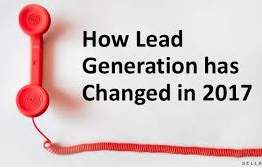Is there a hidden downside to lead generation?
By Kevin Hawkins
Real estate lead generation research tells us only about 1 or 2 percent of all purchased online leads become transactions. Another way to say that is 98 out of 100 times an agent fails to turn a lead into a client, or 98 times out of 100 they are being rejected.
Yet the convention wisdom in real estate is that you only need to turn one lead into a transaction to pay for all the leads you’ve purchased this year many times over.
But is there a problem with this logic? Is it looking at only one side of the equation, that is, the upside? But isn’t there a downside once one considers all the collective human capital that is expended to find that one needle in the proverbial lead generation haystack?
Is lead generation also creating a tremendous waste of human intelligence?
The cost of human rejection
Most of us probably don’t think too much about the impact of the massive rejection that online lead generation is creating in real estate today. There is a reason we have robo-calls and don’t have door-to-door sales anymore: As humans, it’s tough to tolerate this kind of continuous rejection. It’s likely the main reason why sales call centers have incredibly high turnover rates. When someone hears “no” 99 times out of 100 calls, it must be demoralizing.
Is it really any different in real estate? A UCLA-lead team of psychologists found that two key areas of the brain appear to respond to the pain of rejection in the same way as physical pain. The study’s lead author, Naomi Eisenberger, told ScienceDaily, “There’s something about the exclusion from others that is perceived as being as harmful to our survival as something that can physically hurt us, and our body automatically knows this.”
We know rejection is painful, yet real estate subjects tens of thousands of hard-working real estate agents to this process all the time. Is it any surprise, taking these numbers into consideration, that real estate agent struggle following up on all the leads their brokers give them? (See this WAV Group Study.) One has to wonder if online lead generation isn’t contributing to weakening teams and agents.
Breaking bad habits
An argument can be made that the correct way to handle this type of lead generation is to use employees and agents who are independent contractors to handle these leads upfront. Shifting to using a dedicated staff to sift through leads is a better strategy than wasting the talents of your agents. Besides, if your agents are not employees, yet you are telling them what to do with these online leads, shouldn’t they be classified as employees? This is where lead generation can be a very slippery slope.
We know that when someone is spending $3,000 a month on Zillow leads, they are not about to admit that they aren’t working. It’s akin to newspaper advertising That is still being mindlessly purchased to solely appease sellers. Despite the fact that we know how ineffective newspaper advertising is, we continue to stroke the egos of sellers. Online lead generation is in a similar space if you measure the total efficiency of the entire process. WAV Group studied the effectiveness of some systems, where agents are actually spending as much as 66% of their commissions towards this kind of marketing expense.
A better way
One of the most important things that brokers can do today for their agent s when it comes to lead generation is to focus on quality, not quantity. This is the direction that lead generation must move, because the human capital cost is too high from the millions of dollars of dead leads that are being sold, while the ultimate benefits are too low. Moreover, it is clear when you talk to agents who were early adopters of only lead generation, that many are seeing diminishing returns.
In response, the portals are hinting at leveraging their Big Data to find more needles in the haystack. Some industry thought leaders are warning that the cost of leads are actually going to go up, as the portals separated out the hottest leads, putting a huge premium on these so-called “transaction likely” leads.
But agents know one great source where the hottest leads are: they are still coming from their Yard Signs. Yes, according to the most recent NAR study of home buyers and sellers, the For-Sale sign still reigns as Top 5 information source. It has been and continues to be one of the best sources of transaction-ready leads, yet so few brokers and agents are focused on how to leverage the power of the arcane, but still highly effective marketing tool.
That’s where opportunity really lies for agents and brokers: not online, but just 50 feet from their listing. We know that when a buyer calls that number, agents know that it’s go-time.
So why isn’t there more being done to perfect this lead generation machine?


